“If not us, then who?” – 7 Reasons Why Remote Learning Options NEED to Be a Permanent Part of Public Education
2/2/2021
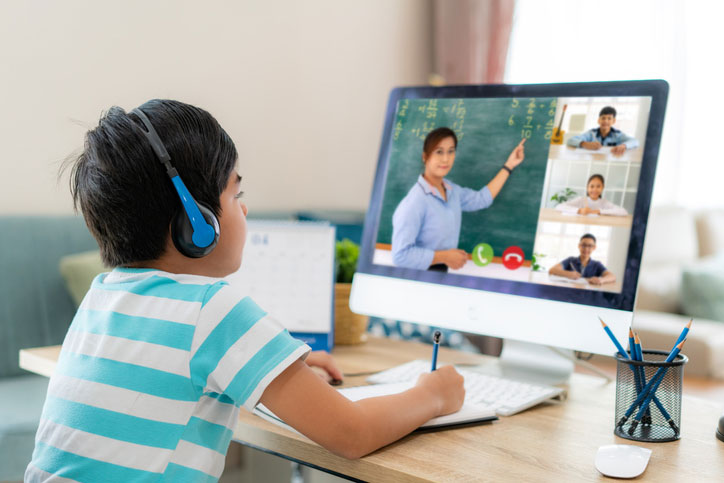
"Never let a good crisis go to waste…" - Winston Churchill
We can fight the idea of remote learning becoming a mainstay in public education. In fact, it's pretty easy to pick on. We know it isn't as strong a method of instruction as compared to learning onsite and face to face. You would be hard pressed to find many educators or parents for that matter that wouldn't agree with these statements.
Education leaders have many reasons to argue remote learning is ineffective in public education. Here are a few of those arguments I have heard over the past year:
- Engaging students is difficult.
- Teachers find it difficult to hold students accountable.
- Teachers can't make students log into their computers.
- Students are not doing the work nor turning it in.
- Difficulty between synchronous and asynchronous instruction.
- Parents are not supporting their children.
- Parents do not know how to support their children.
- Screen time is increased.
- Education leaders stated, "It wasn't like this when I was in school."
- All sides on the educational pandemic have commented, "We need to get back to normal."
In the rush to return to normal, use this time to consider which parts of normal are worth rushing back to. - Dave Hollis
We are missing the boat if we think remote learning is just going to go away in the post-pandemic world. But whether public education decides to board this large moving ship for the long haul remains to be seen.
Here are seven reasons I believe remote learning is here to stay and why public educators must come to grips with it in their community.
1 - Remote Learning is Just a Better Fit for the Lifestyles of Some Families
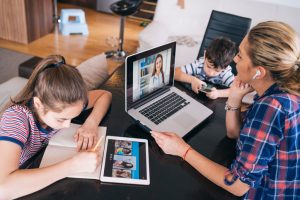
What we have found out from the pandemic is that there are actually some families thriving in this environment. Families are able to spend more time together and remote learning from home allows for lifestyles that have different schedules.
A multitude of companies have found that their employees can work from home and many are finding that the situation is working out better than when having their employees come into work. And as companies come to realize that they are saving real dollars by avoiding the onsite costs that come with physical structures, heating, electricity, plumbing, and more, they can't help but see the benefits of the remote work model.
These employees are working from home, supporting their families, and getting valuable family time. In fact, in my area, Bitterroot Valley in Montana, we are seeing an increase of families moving into the area from all over the United States and working remotely from their home while maintaining careers that could be located in California or New York. Families like the lifestyle and location, and if given the opportunity to work from home, many of them are making this choice and making a move, citing financial and safety reasons, as well as a better quality of life for themselves and their families.
This same choice will need to be part of successful public schools going forward, likely well into the future. Families will want that same choice to work from home and for their children to learn remotely. Families will then be able to work remotely while in the area or even in another state for an extended period of time. Remote learning in public education will also help these families with mobility, giving them the freedom to relocate for even more of the things that contribute to a better quality of life like a bigger home, more property and communities they prefer.
In addition, there are many other family lifestyle decisions that lend themselves to remote learning: whether it's supporting a child involved in specialized sports by going where the opportunities are to compete, farming and ranching families, migrant workers, construction or project based workers, and so much more.
And contrary to what you might think, socio economic status isn't necessarily the big factor in these decisions. Families that were once debating homeschool due to religion or beliefs will be able to choose remote learning from the closest public school or even the best public school in a state. Can you imagine having this kind of choice in public education? For the past two decades, many of us in the education system have been fighting much of what this would look like, but we need to recognize the benefits that come with these kinds of options too!
This can become controversial as the public schools that can do this the best may see an increase in enrollment as compared to other schools who are not going to offer a remote learning option. This competition pits public schools against each other, but don't we already have this? There will be arguments stating that some students can't choose which school they attend, but allowing for remote learning anywhere will give these students choice...further discussed in argument number seven below.
2 - When a Student or Someone In Their Household Has a Health Condition, We Must Think Differently About How Education is Delivered
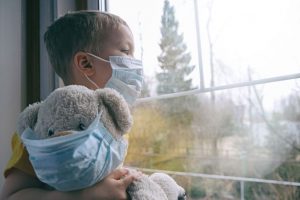
With over 200 remote students out of our 1,300 student population in our K-12 school district, we are listening to the stories of our families. Many of these stories contain family members with special health conditions, either the students themselves or someone else in the home. These students are avoiding public places in order to keep their family members or themselves safe from COVID (or any other illness).
Some suffer from health conditions that leave them fragile and susceptible, placing them squarely in the high-risk category. It's understandable that these families are not willing to take the risk even with a mass distribution of vaccines. We must ask ourselves; will we require all these students to come back? And if they do not return to campus, will we push them into a homeschool situation where they don't get the benefits and support of the public school system?
We are at a crossroads where public education can and should have a remote option for these families, especially for those with health conditions that could be made worse by unnecessary exposure. The global pandemic has opened our eyes to the possibility of tragic consequences that can come with contracting a disease, whether its COVID19 or something else. I believe families should have the option, due to health conditions, to choose remote learning from their public school.
Schools that force these students to come back to school will be creating a divide in their community. Families will choose homeschooling over onsite public education. These families will also begin to ask for a voucher from their state to help pay for homeschooling education or from a private company or school that is already providing this education (ie...charter school, private school, magnet school, etc…). To avoid the voucher issue in your state, I believe that remote learning can be and should be an option for students in their local public school.
3 - Some Working Families Include School-Aged Children Who Also Work

Last year during the "shutdown" when there was a stay at home order, we found that many students who worked were classified as "essential workers." Their employers required them to come in if they were healthy. Some of these students were working ridiculous hours at their job because many older employees were either calling in sick or afraid to be out in public. These students were working remotely and maintaining their jobs.
As we have found this year, we have these same students in school now. They are choosing our remote learning platform and continuing to work their jobs. Again, as public educators, we must ask ourselves, "Why wouldn't we allow families to make this choice for themselves?"
Many families rely on two if not three incomes just to make ends meet. By providing students with the option of either onsite or remote learning platforms, we can give these families the flexibility to continue working while completing the requirements in our online learning program.
4 - The Phenomenon of "In and Out" Families Will Persist

In many school districts that I have communicated with this past year, we are all seeing this influx of students going in and out of school between remote and onsite learning. In our school district we have tried to limit these transitions to reporting periods, such as at the very beginning or end of a quarter or tri- semester. But there always seems to be circumstances that cause us to revisit this policy. This may be the same for many schools that have high mobility school years, even before Covid came along, but as I'm seeing it now in our school district, it's become an issue that really has my attention.
Having a remote option for students and families that are mobile will serve public education well. Schools will be able to retain students and support them in maintaining their education more consistently even as they move from place to place. Yes, it will always be a challenge to keep these students engaged, in fact it has continued to make us think outside the box the past 10 months as we've worked to stay ahead of the problem.
With students becoming more connected to online resources, and schools possibly providing a free device and platform, we can continue to accommodate these students going in and out of remote learning. It will be the most difficult task that we take on, but who better to do it than public educators. If we don't, other schools will provide this programming.
5 - If We Don't Take the Lead and Seize this Opportunity, Other Schools and Companies Will
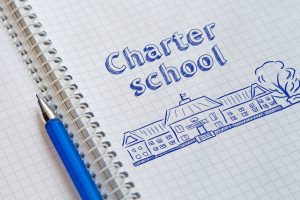
One of my strongest arguments for continuing remote learning resounds, "If not us, then who?" If public education doesn't take this on, then private companies, private schools, and others will be offering remote learning for students.
I am a firm believer in a strong public education as the backbone of our country. Privatizing education and making the best schools only available to the few who can pay for it creates a society of inequity. Who better to create a platform that will allow all students the opportunity to excel. No matter if you are born in the poorest of counties in the United States, you should be able to access a free and appropriate public education.
I know we can do this, in my school district we have had 10 months to refine the process. We have had the mindset -- let's build something for the future. The product we have created is commendable. Can you imagine the continuation of this refinement 10 years down the road? Again, I ask, "If not us, then who?"
6 - Privatization and the Voucher Movement Are Almost Certain in the Post-Pandemic World
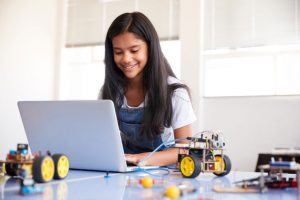
Public education in many states provides for some choice. That choice may come in allowing families to register outside of their school district, or allowing for certain tracks of learning, or even the ability to specialize. Many schools even tout the many dual credit courses and AP courses they offer while other districts allow for students to garner certificates and training (ie...welding, CNA, dental hygienist, and more).
By providing more choice, remote learning, public education will be able to celebrate the many opportunities that private schools, private companies, and others are offering students across the United States. It seems many of these schools have a specific niche in American education. Many states are moving towards vouchers. A voucher is the ability for a parent to take the money allotted for their child in a public school and move that entitlement to a private school or charter school. Many states have fought this ability to provide vouchers for students as it can defund the local public schools, causing drastic budget cuts, and in essence, get rid of the very people and programs these local public schools depend on.
Public education can argue that we will be able to offer many choices and opportunities for our students in a free format in local schools. I believe we can do it just as well or better than these private companies or private schools.
7 - Providing Choice Helps School Funding Formulas

I noticed that National School Choice Week, a week of celebrating everything but public schools, is January 24-30 across the United States. There is an organization with the same name on Facebook and they are promoting events and even sending out materials. In researching more, they are targeting states that do not have charter schools or vouchers.
I can tell you many public schools already offer "school choice" in much of the same fashion that this group promotes. Many school districts have open enrollment and you can attend a school outside of your designated area. In many of these communities you as a parent can even choose what school inside the school district you would like to attend.
Families can find schools that have an emphasis in a specific area. In much the same manner as a magnet school, public schools have been developed that specialize in areas like Career and Technical Education, Music and Arts, STEM, and more. Public schools offer choice. Many public schools have strengths such as these. With a little research, families can find public schools in populated areas that best suit their families' and students' interests and needs. If your community has no other options, remote learning may be that choice.
I believe public schools can offer this same "choice" onsite and through an online platform. If your state allows for portability of the per-student fiscal allotment, in other words, allows students to attend a school outside of their specified school district, remote learning can be done anywhere. Currently, in Montana the out of district regulatory rule for remote learning has been lifted during the pandemic. This is a piece of legislation that I feel needs to remain in place after the pandemic is "over."
Public schools can provide choice, and many are doing it well already. We will be stronger when we can offer remote learning as an option, also! If public schools don't offer online and remote learning, there are charter schools, private schools, magnet schools, and more that are lining up to pull students out of our public education settings.
Again, I ask, "If not us, then who?"
- Learning How to Say No and Set Boundaries with Parents - November 21, 2022
- If You Had Only One Behavior Strategy to Use in Your Classroom, What Would It Be? - September 26, 2022
- Live Your Code: 7 Strategies That Will Help You Be the Most Effective Educator You Can Be - August 15, 2022









